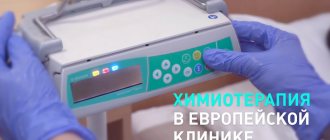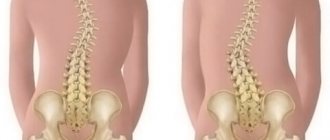Acute lymphoblastic leukemia (common abbreviation ALL) is a malignant disease of the blood and bone marrow in which the hematopoietic organ uncontrollably produces immature (blast) lymphocytes. This leads to a sharp deterioration in the patient's condition, increases the risk of bleeding and susceptibility to infections. The disease most often affects children aged one to six years, and it occurs more often in boys than in girls. Adults suffer from ALL much less often than children, and the highest incidence rates are in elderly people over 60 years of age.
Kinds
Based on the type of lymphocytes affected, clinical cases are divided into:
- B-cells, which account for up to 85% of patients in whom the hematopoietic organ actively produces immature B-cells (in a healthy body, producing antibodies to pathogens);
- T cells, making up up to 15% of patients, which produce immature T cells (normally responsible for regulating antibody production).
Acute lymphoblastic leukemia B-type most often affects young children and people in the older age group. The main risk group for T-type ALL are adolescents aged 14-15 years.
Symptoms
The first signs of the disease develop with an increase in immature lymphocytes in the blood:
- pale skin;
- fast fatiguability;
- increased body temperature;
- excessive sweating, especially at night;
- frequent colds;
- bruises and bruises on the skin;
- weight loss for no apparent reason.
As leukemia cells spread, symptoms of acute lymphocytic leukemia develop, indicating damage to other organs:
- headaches, visual and hearing impairment, deterioration in coordination of movements, numbness of the facial muscles upon penetration into the brain and nervous system;
- pain in bones and joints with total bone marrow damage;
- pain in the right hypochondrium with metastasis to the liver and spleen.
Other manifestations of the disease may occur, depending on the location of the damage.
Causes of leukemia in children
It has been proven that acute leukemia is a “clonal” pathology. As a result of the mutation process occurring in the hematopoietic cell, its differentiation fails at the stage of immature forms (blasts) with their further growth (proliferation). A malignant tumor forms, replacing the bone marrow and preventing normal hematopoiesis. Blasts begin to leave the bone marrow, enter the blood and spread throughout the body. Leukemic infiltration of organs and tissues develops.
The origin of tumor cells from one mutated cell is proven by the fact that they all have identical morphological, biochemical and immunological characteristics. But what are the causes of leukemia in children and where does the mutant cell come from, scientists have not fully figured out.
It is believed that the following factors can trigger a pathological process in a child’s body:
- hereditary predisposition (if one of your relatives had leukemia, the disease may manifest itself in subsequent generations);
- genetic disorders (Down syndrome, Li-Fraumeni syndrome, neurofibromatosis, etc.);
- radioactive effects on the child’s body (man-made accidents, atomic explosions);
- increased solar insolation caused by ozone holes;
- poor environmental conditions;
- passive smoking (the child constantly inhales air containing smoking products);
- disruption of DNA structure caused by viral infections.
Causes and risk factors
Oncohematologists associate the appearance of malignant clones, giving rise to acute lymphoblastic leukemia, with a number of provoking factors.
- Radioactive radiation, including radiation therapy for another cancer.
- Some infectious diseases.
- Prolonged contact with carcinogenic chemical compounds.
- The presence of close relatives who suffered from a similar cancer pathology.
- Diseases associated with genetic abnormalities.
- Smoking tobacco.
In children, the disease can develop if the mother was exposed to one or more of these factors during pregnancy.
Acute myeloid leukemia
Acute myeloid leukemia accounts for 15% of all acute leukemias in children. The existing FAB classification (French-American-British) allows you to divide AML into the following options:
- M0 (minimally differentiated AML), which is characterized by medium-sized blast cells with a round nucleus, absence of granulation and Auer rods in the cytoplasm;
- M1 (AML without maturation), in which less than 90% of non-erythroid cells are blast cells with a predominant mesogeneration with round nuclei and a high nuclear-cytoplasmic ratio;
- M2 (AML with maturation), characterized by medium-sized blast cells with a high and moderate nuclear-cytoplasmic ratio (20 - 90% of all non-erythroid cells), in their cytoplasm the presence of azurophilic granules and Auer rods is expressed;
- M2 bases (basal cell), blast cells are characterized by the presence of basophilic granularity, makes up no more than 0.5% of acute non-lymphoblastic leukemia;
- M3 (promyelocytic) variant is characterized by large blast cells with irregularly shaped nuclei, coarse granulation and Auer rods in the cytoplasm;
- M3v (hypogranular) with no granularity;
- M4 (myelomonoblastic): blast cells with round and irregular nuclei, low to moderate nuclear-cytoplasmic ratio, some blast cells may contain granularity, Auer rods;
- M5a (monoblast without maturation), in which monoblasts make up over 80% of monocytoid cells, large-sized blast cells with bean-shaped or lobed nuclei, some of them show granularity, Auer rods are not detected;
- M5b (monoblastic with maturation): monoblasts make up less than 80% of monocytoid cells, large with monocytoid-shaped nuclei, cytoplasm without granulation, Auer rods are not detected;
- M6 (erythromyelosis): more than 50% of blastomas in the bone marrow are represented by erythroblasts;
- M7 (megakaryoblastic) leukemia, in which the blast cells are polymorphic, with branched basophilic cytoplasm, and there are no specific morphocytochemical signs.
Scheme of hematopoiesis with precursor cells of acute myeloid leukemia
The clinical picture of AML also consists of anemic, hemorrhagic and toxic syndromes, which are a consequence of decreased production of red blood cells, platelets and granulocytes.
In 50% of patients, there is an increase in the size of the liver (hepatomegaly) and spleen (splenomegaly) due to infiltration of organs by tumor cells.
Extramarrow manifestations of the disease are associated with leukemic infiltration of the central nervous system and metastatic damage to the membranes and substance of the brain and spinal cord (neuroleukemia). In these situations, there is a constant headache, vomiting, lethargy are possible, swelling of the optic discs is detected, there may be nystagmus, strabismus, and other signs of damage to the cranial nerves, stiff neck muscles, and Kernig's sign are detected.
Cytochemical, immunophenotypic and morphological examination of blasts in the bone marrow and peripheral blood also plays a decisive role in diagnosis.
Remission of the disease can be achieved through high-dose polychemotherapy followed by transplantation of hematopoietic stem cells from an HLA-genoidentical related or alternative (unrelated, haploidentical) donor in patients at high risk of relapse. Thanks to adaptive protocols, it is possible to achieve remission in 90% of children.
Stages
The following stages of the disease are distinguished.
- Start. It is characterized by a general deterioration in well-being, the appearance of the first nonspecific signs - pallor, fatigue, pain in the muscles and bones.
- The height of Symptoms characteristic of oncopathology are pronounced, the patient’s condition sharply worsens.
- Remission. The patient’s well-being improves, clinical and hematological parameters return to normal.
- Relapse. After remission, the number of blast lymphocytes increases again, and pathological symptoms return.
- Terminal stage. The disease progresses rapidly and vital organs are affected. The most common outcome is death.
Diagnostics
Since the disease develops very quickly, when contacting an oncologist or oncohematologist, the symptoms of acute lymphoid leukemia are usually already pronounced. However, to confirm the diagnosis and determine treatment methods, laboratory tests are necessary, as well as instrumental studies:
- general and biochemical blood tests;
- myelogram - study of bone marrow cells, cytochemical analysis, immunophenotyping;
- spinal cord puncture with histological and cytological examination of the biopsy;
- Ultrasound of internal organs and lymph nodes;
- chest x-ray;
- ECG and other studies according to symptoms.
How to identify leukemia in a child - diagnosis
Suspicions of leukemia in a child usually arise from a pediatrician. Further examination and treatment of the little patient is carried out by an oncohematologist. To make a diagnosis, it is necessary to carry out basic laboratory methods:
- bone marrow examination;
- peripheral blood examination.
A blood test for leukemia in children shows:
- anemia;
- reticulocytopenia (low content of young red blood cells);
- thrombocytopenia (low platelet count);
- high ESR;
- blastemia (release of blast cells into the peripheral blood);
- leukopenia (low white blood cell count);
- complete absence of eosinophils and basophils.
A classic symptom of leukemia in children is the phenomenon of “leukemic failure,” which is characterized by the absence of intermediate forms between mature and blast cells.
Mandatory procedures in the further diagnosis of leukemia:
- Sternal puncture. The procedure is performed under local anesthesia and is aimed at assessing the state of bone marrow hematopoiesis. The patient lies on his back. A Kassirsky needle with a special safety shield that prevents damage to the mediastinal organs is inserted at the level of 2-3 ribs in the midline.
- Myelogram study. To collect diagnostic material, a puncture of the sternum is performed at the level of the 2-3 intercostal space. The doctor uses a needle with a safety lock, so damage to internal organs is excluded. If the child is under two years old, a bone marrow sample is obtained by puncturing the tibia (the puncture is made in the upper third along the inner surface).
Additionally, when diagnosing leukemia:
- immunological, cytochemical and cytogenetic studies are carried out;
- consultations with an ophthalmologist and neurologist are prescribed;
- a lumbar puncture is performed (by inserting a puncture needle into the subarachnoid space of the spinal cord, the doctor takes cerebrospinal fluid (CSF) for further study);
- X-rays of the skull and ophthalmoscopy (examination of eye structures) are performed;
- Cerebrospinal fluid is examined.
According to indications, the following is performed: ultrasound of the liver, spleen, lymph nodes, salivary glands, scrotum in boys. In order to identify metastases, the child is prescribed a computed tomography scan.
During diagnostic procedures, it is important to differentiate leukemia from whooping cough, tuberculosis, cytomegalovirus infection, infectious mononucleosis, and sepsis. Full diagnostics can be performed in any modern hematology clinic
.
Treatment
As a rule, the treatment regimen for acute lymphoblastic leukemia includes three main stages.
Induction. The duration is several weeks. Intensive chemotherapy is aimed at destroying malignant lymphocytes. By the end of the stage, there should be no more than 5% immature cells in the bone marrow.
- Consolidation. The efforts of oncologists are aimed at consolidating the achieved results and preventing relapse of acute lymphoblastic leukemia. To do this, the patient is administered chemotherapy drugs in courses. At this stage, it is possible to transplant healthy stem cells to restore hematopoietic function. In the absence of stable remission and a high risk of relapse, a bone marrow transplant may be prescribed.
- Maintenance therapy. As a rule, this stage involves outpatient treatment, but it is no less important than the previous ones for achieving stable remission. The patient is prescribed oral chemotherapy drugs, undergoes regular examinations, and fulfills all the appointments of the oncohematologist.
At all stages, treatment is accompanied by the use of antimicrobial agents, platelet and blood transfusions. The body is periodically detoxified to cleanse the blood of breakdown products of leukemia cells.
Lymphocytic leukemia is a malignant disease in which the bone marrow produces a large number of immature lymphocytes that are unable to perform their functions. Lymphocytes are a type of white blood cell and are responsible for immunity. Malignant leukocytes do not cope with the protective function, while suppressing the formation of normal blood cells and disrupting the functioning of other organs.
There are many varieties of this disease. Lymphocytic leukemia is divided depending on the speed of development of the pathological process, the degree of maturity of lymphocytes, and the type of damaged lymphocytes (T- and B-lymphocytes). However, most often there are 2 main types: acute lymphoblastic leukemia and chronic lymphocytic leukemia.
Treatment of leukemia is usually complex. At the moment, there are several treatment options, and every year new, increasingly effective methods for treating lymphocytic leukemia appear. The prognosis for acute lymphocytic leukemia is favorable - 95% of patients are completely cured. The prognosis for chronic lymphocytic leukemia depends on the speed of development of the disease and associated pathologies; it progresses steadily, but appropriate treatment often leads to remission and significant improvement in the patient’s condition.
Synonyms Russian
Acute lymphocytic leukemia, acute lymphocytic leukemia, acute lymphoblastic leukemia, chronic lymphocytic leukemia, chronic lymphocytic leukemia.
English synonyms
Pediatric acute lymphoblastic leukemia, childhood acute lymphoblastic leukemia, acute lymphocytic leukemia, ALL, chronic lymphocytic leukemia, CLL.
Symptoms
Acute lymphoblastic leukemia develops quite quickly - usually within a few weeks. Its symptoms are:
- fever,
- weakness, malaise,
- bleeding gums, frequent nosebleeds,
- stomach ache,
- bone pain,
- headache,
- enlarged lymph nodes in the neck, axillary and groin areas,
- pallor.
Chronic lymphocytic leukemia usually does not manifest itself in any way at the initial stage. It develops over years, and the following symptoms gradually appear:
- frequent infectious diseases,
- increased sweating, especially at night,
- hemorrhages in the skin and mucous membranes,
- heaviness in the stomach,
- weakness, malaise,
- causeless weight loss,
- pallor,
- dyspnea.
General information about the disease
Lymphocytes are a type of white blood cell. Like all other blood cells, lymphocytes are formed from a single stem cell, which is found in the bone marrow and gives rise to lymphoid and myeloid stem cells. Lymphocytes come from the lymphoid stem cell, and other types of leukocytes, erythrocytes and platelets come from the myeloid stem cell.
In order for a lymphoid stem cell to develop into mature T and B lymphocytes, it must go through a series of successive divisions. First, lymphoblasts are formed from a lymphoid stem cell, which then give rise to 2 types of cells - T-lymphocyte precursors and B-lymphocyte precursors. As cells divide, they become more mature and specialized. The last stages of lymphocyte maturation no longer take place in the bone marrow, but in the lymphoid organs: the thymus, lymph nodes and spleen. As a result, mature T and B lymphocytes are formed.
Lymphocytes are essentially immune cells. This means that they are involved in the recognition and destruction of foreign bodies (viruses, bacteria) or pathologically altered tissues of one’s own body (for example, tumor cells). T and B lymphocytes do this differently. B lymphocytes fight foreign cells (antigens) with the help of immunoglobulins - proteins that bind antigens and trigger the process of their destruction by special proteins. T lymphocytes recognize antigens, destroy them independently or in interaction with other blood cells, and activate the production of immunoglobulins by B lymphocytes.
In lymphocytic leukemia, the formation of lymphocytes is disrupted. A large number of immature cells appear that are not able to do their job. This leads to serious immune failures. A person becomes more susceptible to infectious diseases such as tuberculosis and candidiasis. Serious complications from routine vaccinations can occur. So-called autoimmune reactions often appear - that is, the immune system fights normal cells of the body, such as red blood cells. The result is anemia.
Malignant lymphocytes penetrate the lymph nodes and spleen, causing them to enlarge, and can damage the liver, lungs, brain, and bones.
In acute lymphocytic leukemia, lymphoblasts predominate in the bone marrow. They divide very quickly, displace other cells from the bone marrow and blood, and actively populate the lymph nodes and spleen. The most common are acute B-cell leukemias, which produce a large number of immature B-lymphocytes. Acute B-cell leukemia is the most common type of leukemia among children.
In chronic lymphocytic leukemia, more mature forms of lymphocytes are found in the blood, which are able to perform their functions for some time. This type of leukemia is typical for people over 50-55 years old.
Who is at risk?
In case of acute lymphocytic leukemia at risk:
- people exposed to radioactive radiation,
- people who have undergone chemotherapy or radiation therapy for another form of cancer,
- patients with Down syndrome and other genetic disorders,
- people whose siblings have been diagnosed with acute lymphocytic leukemia.
In case of chronic lymphocytic leukemia at risk:
- representatives of the Caucasian race,
- people over 60 years old,
- people whose relatives have had cases of leukemia.
Diagnostics
- Complete blood count (without leukocyte formula and ESR) with leukocyte formula. This study provides the doctor with information about the quantity, ratio and degree of maturity of blood elements.
- Leukocytes. In acute lymphocytic leukemia, leukocytes may be increased, normal, or decreased. The leukocyte formula (the ratio of individual types of leukocytes) is determined from a blood smear. To do this, a thin smear is applied to a glass slide, stained with special dyes, and then examined under a microscope. In this way, the doctor can not only determine the ratio of leukocytes, but also identify pathological, immature cells that differ in appearance from normal ones. In acute lymphocytic leukemia, lymphocytes of varying degrees of maturity can be found in the blood - from lymphoblasts to mature cells.
- In chronic lymphocytic leukemia, lymphoblasts are usually absent from the blood. A characteristic sign of chronic leukemia is the detection of Botkin-Gumprecht cells (or shadows) in a blood smear. They are the remains of destroyed lymphocytes. Botkin-Gumprecht shadows are absent in liquid blood and are formed during the preparation of a smear. Their number determines the intensity of destruction of lymphocytes in the blood.
- Platelets may be low.
- Red blood cells and hemoglobin. Can also be reduced.
- Flow cytometry, immunophenotyping. For complex variants of lymphocytic leukemia, these techniques make it possible to accurately determine the type of malignant cells. Flow cytometry measures cell parameters using a laser beam. Immunophenotyping involves the detection of proteins specific to different cell types on the surface of the lymphocyte membrane.
- Cytogenetic studies. Usually venous blood is taken. Blood cells are fixed and stained, after which a specialist examines their karyotype under a microscope - a complete set of chromosomes that is identical in any human cell. Used to identify chromosomal abnormalities characteristic of lymphocytic leukemia. With lymphocytic leukemia, the 11th, 13th, 17th chromosomes can be damaged - a certain part of them falls out, and an extra 12th chromosome (trisomy) can also appear. The prognosis of the disease largely depends on the type of chromosomal abnormalities. For example, the loss of a section of the 13th chromosome or trisomy 12 in the absence of other changes in the chromosomes is a favorable sign, and the loss of a section of the 11th or 17th chromosomes determines a worse prognosis.
- Bone marrow biopsy is the removal of a sample of bone marrow from the breastbone or pelvis using a fine needle. It is carried out after preliminary anesthesia. Leukemia cells are then identified under a microscope.
- Spinal puncture to detect leukemia cells in the cerebrospinal fluid that bathes the spinal cord and brain. A sample of cerebrospinal fluid is taken with a thin needle, which is inserted between the 3rd and 4th lumbar vertebrae after local anesthesia.
- Chest X-ray. May show enlarged lymph nodes.
- Ultrasound of the abdominal organs. Helps identify enlarged liver and spleen.
Treatment
- Chemotherapy is the use of special drugs that destroy leukemia cells or prevent them from dividing.
- Radiation therapy is the destruction of leukemia cells using ionizing radiation.
- Targeted therapy is the prescription of drugs that have a targeted effect on certain types of malignant cells. These drugs interact with certain proteins on the surface of leukemia cells and cause their destruction.
- Bone marrow transplant - normal bone marrow cells are transplanted into the patient from a suitable donor. A course of chemotherapy or radiation therapy in high doses is first administered to destroy all pathological cells.
- Radiation therapy is the destruction of leukemia cells using ionizing radiation. Can be used in acute lymphocytic leukemia to completely destroy leukemia cells before bone marrow transplantation.
The prognosis for acute lymphoblastic leukemia is favorable, especially in children. Most patients are completely cured. The prognosis of chronic lymphocytic leukemia depends on the rate of disease progression and sensitivity to chemotherapy. The average life expectancy of patients with chronic lymphocytic leukemia is 3-5 years.
Prevention
There is no specific prevention of lymphocytic leukemia. It is necessary to undergo timely preventive examinations, during which blood diseases are often detected.
Recommended tests
- General blood analysis
- Leukocyte formula
- Hemoglobin
- Cytological examination of punctates, scrapings of other organs and tissues









